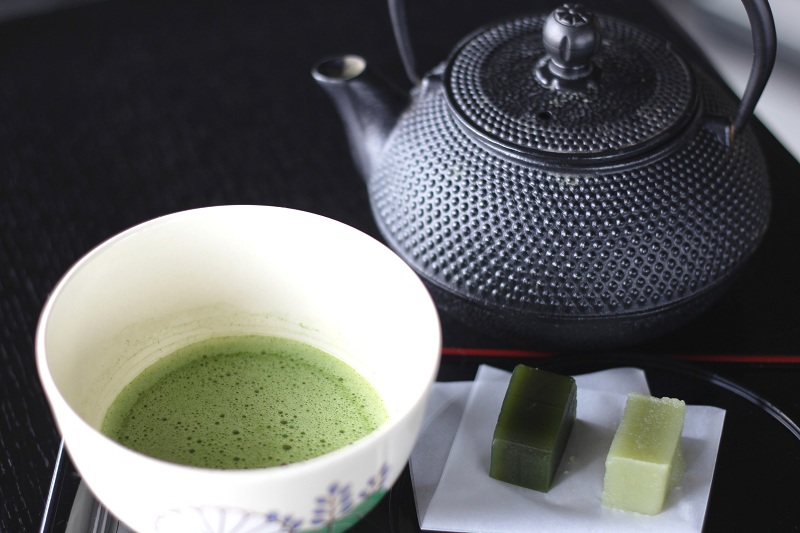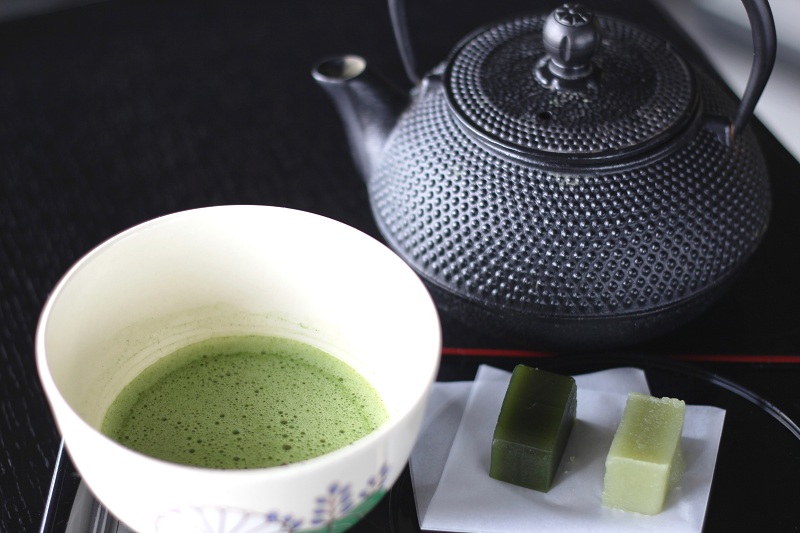
In the Japanese Tea Ceremony, making tea and drinking tea are two inseparable parts. The actions of the tea maker reflect the heart of the tea maker. This heart will make the tea making more standard. Omotenashi is a Japanese welcoming and entertaining ritual. This ritual is also present in the Japanese Tea Ceremony.
Drinking tea is not just about enjoying and admiring but also about drinking together. It is about stories discussed around a cup of tea with close friends. It is about interaction and understanding between the person making the tea and the person drinking the tea. They are the objects in the Japanese tea ceremony. Tea only plays a secondary role in the Japanese tea ceremony.
Another object is the utensils for making and drinking tea. The utensils for making and drinking tea in Japanese Tea Ceremony are very simple, yet very sophisticated.
The Japanese Tea Ceremony at Sorae Restaurant on February 17 and 18, 2017 will feature Mr. Keiji Hashimoto – founder of Itsuhashi Confectionery Co., Ltd. He lives and works with a constant passion to bring customers high-quality products, whether tea or confectionery, cultivated and processed according to strict selection standards and natural ingredients.

The main subjects in the Japanese Tea Ceremony:
MATCHA: Matcha is made from young tea buds and then ground into powder. The matcha production process is very meticulous and precise in every step.
TRADITIONAL SWEETS: Yokan (red bean jelly cake) - One of the popular cakes in Japan, made mainly from bean flour, agar, sugar; Uirou - Uirou is also one of the popular cakes in Japan, made mainly from rice flour, agar, sugar. The flavor is similar to Mochi, with many flavors such as strawberry, sweet bean, matcha.
Tools used in Tea Ceremony
- Futaoki (Futaoki) tea pot lid holder, made of bamboo
- Hisyaku (Hisyaku) tea scoop
- 茶筅 (Cyasen) tea palm
- 茶杓 (Cyasyaku) wooden tea spoon
- Temari tea cup (Cyawan) Temari tea cup (a round cup with many colors)
- 香合 (Kougou) tea box
Capella-D1 Concepts is a place where passion and creativity in the culinary industry converge. Because this is where people gather with enthusiasm and care in every dish, drink and decoration. The first idea is Sorae Japanese restaurant and San Fu Lou Cantonese. Up to now, both restaurants have become popular in the culinary industry of Ho Chi Minh City. Continuing the ambition of new brands, Capella-D1 Concepts opened a Vietnamese restaurant called Di Mai. With a contemporary folk style and typical Vietnamese dishes, Di Mai restaurant continues to be welcomed by domestic and foreign customers.


































